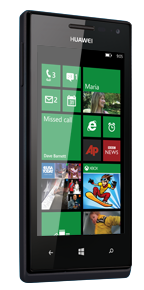Microsoft, Windows Phone makers change tactics in search of share

Microsoft and its Windows Phone maker partners are changing the tried and true ways of licensing Microsoft's Windows Phone operating system in the hopes of stimulating demand.

The Times of India reported on March 13 that Microsoft is making its Windows Phone operating systemavailable for free to two of its newly-signed Windows Phone partners: Lava (Xolo) and Karbonn. There have been previous reports that Microsoft was willing to drop its per-device phone operating-system license fee to zero, but The Times of India is citing unnamed, multiple industry sources claiming that giving away the Windows Phone OS for free was key to Microsoft's ability to sign on these new partners.
Microsoft isn't commenting on the report.
Microsoft hasn't disclosed how much it charges phone makers per device for the Windows Phone OS. I've seen reports of anywhere from $5 to more than $30 per phone. The price is likely dependent on volume of phones built/sold.
Meanwhile, another March 13 report -- this one in TrustedReviews.com -- quotes an official with Huawei, another Microsoft Windows Phone partner, as saying Huawei will bring a dual-boot Windows Phone/Android device to market this year. This isn't, as some have believed, a phone which would provide carriers and/or users with a one-time choice between the two operating systems. Instead, it would be a device that would allow users to switch at will between the two operating systems.
Huawei's Chief Marketing Officer told Trusted Reviews that the company is planning to deliver the dual-OS phones to U.S. customers in the second quarter of 2014. He also said the company is still committed to making Windows Phones, but didn't specify whether that means Windows Phone-only devices in addition to the dual-boot phones.
Microsoft is relaxing its licensing terms and conditions in order to attract new Windows Phone partners even though it is preparing to offer its own phones once its acquisition of Nokia's handset business is approved by antitrust officials around the globe and Microsoft takes ownership. The company has removed certain requirements, such as dedicated capacitive buttons on Windows Phone handsets, so OEMs can opt to put Android or Windows Phone OS on the same device to allow those OEMs to cut costs.
Nokia recently launched three new phones that run Android as their core with various Nokia services taking the place of the typical Google ones that come with Android phones. Microsoft will be the owner of those new Nokia X devices once Microsoft officially acquires Nokia.
I, myself, would think offering users a choice of OSes on a single phone as Huawei is seemingly planning would be more confusing than anything else. It's hard to see why users would use the Windows Phone OS at all if Huawei is planning to offer the full Android/Google stack, plus all the apps in the Google Play Store. It's not clear from the Trusted Reviews post if that's definitely part of Huawei's plan, however.
Microsoft is counting on continuing to target the lower end of the phone market as the one where it has the biggest potential for volume growth with Windows Phone. Windows Phone's market share is still hovering around four percent globally.
(Thanks to Bilal Khan for the heads up on the Times of India story, and to the Verge for the pointer to TrustedReviews' piece on Huawei.)